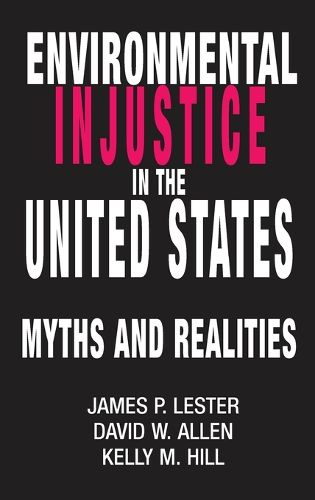Readings Newsletter
Become a Readings Member to make your shopping experience even easier.
Sign in or sign up for free!
You’re not far away from qualifying for FREE standard shipping within Australia
You’ve qualified for FREE standard shipping within Australia
The cart is loading…






Environmental Injustice in the United States provides systematic insight into the social, economic, and political dynamics of environmental decision-making, and the impacts of those decisions on minority communities. The first part of the book examines closely the history of the environmental justice movement and the scholarly literature to date, with a discussion about how the issue made the public agenda in the first place. The second part of the book is a unique quantitative analysis of the relationship among race, class, political mobilization, and environmental harm at three levels– state, county, and city. Despite the initial skepticism of the authors, their study finds both race and class to be significant variables in explaining patterns of environmental harm. The third part of the book then offers policy recommendations to decisionmakers, based on the book’s findings. It was named a Choice Outstanding Academic Book of 2001.
$9.00 standard shipping within Australia
FREE standard shipping within Australia for orders over $100.00
Express & International shipping calculated at checkout
Environmental Injustice in the United States provides systematic insight into the social, economic, and political dynamics of environmental decision-making, and the impacts of those decisions on minority communities. The first part of the book examines closely the history of the environmental justice movement and the scholarly literature to date, with a discussion about how the issue made the public agenda in the first place. The second part of the book is a unique quantitative analysis of the relationship among race, class, political mobilization, and environmental harm at three levels– state, county, and city. Despite the initial skepticism of the authors, their study finds both race and class to be significant variables in explaining patterns of environmental harm. The third part of the book then offers policy recommendations to decisionmakers, based on the book’s findings. It was named a Choice Outstanding Academic Book of 2001.